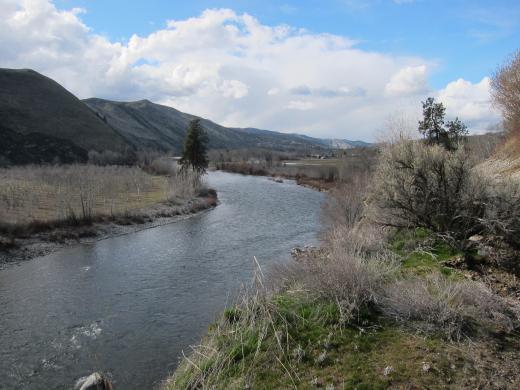Wild Steelhead Get Their Due in WA
By Rob Masonis, VP of Western Conservation for Trout Unlimited
For those of you who have had the good fortune of being tight to a wild steelhead taking you deep into your backing or cart-wheeling across a river, you understand the magic of this fish. And, like me, you probably want fish managers to ensure that such opportunities continue to be available for anglers for generations to come. Here is some good news on that front.
This week the Washington Department of Fish and Wildlife announced that it is designating three southwest Washington rivers – the North Fork Toutle/Green, Wind and East Fork Lewis – “wild steelhead gene banks.” This means that these rivers will be managed for wild steelhead exclusively, without any hatchery steelhead plants. Sure, there are additional southwest Washington rivers that deserve to be “zoned” for wild steelhead, and the Wind River has been hatchery-free since 1997, so that was not a big stretch, but this step is significant nonetheless. It indicates that Washington’s steelhead managers are heeding the mounting scientific evidence that hatcheries harm wild steelhead and don’t belong on every river, particularly those with habitat of sufficient quantity and quality to support robust wild steelhead populations. Change is often difficult and contentious, and that is certainly true when it comes to steelhead management.
During several public meetings, Department staff got an earful from opponents, who see increased protection for wild fish as limiting fishing opportunity. But the opponents were decidedly in the minority. According to the Department, a substantial majority of public comments it received were supportive. That fact is as worthy of celebration as the designations themselves. It signals growing support among steelhead anglers for actions necessary to rebuild wild steelhead populations. And this growing support is not just because anglers appreciate wild steelhead for the spectacular creatures that they are, but because they realize that good wild steelhead stewardship means more fishing opportunity—if not immediately, then in the not-too-distant future.
So kudos to the Washington Department of Fish and Wildlife for taking tangible steps toward protecting wild steelhead. Let’s make sure the progress continues as the Department shifts its focus to the rivers of Puget Sound to designate additional wild steelhead gene banks. The Skagit River is a prime candidate.

